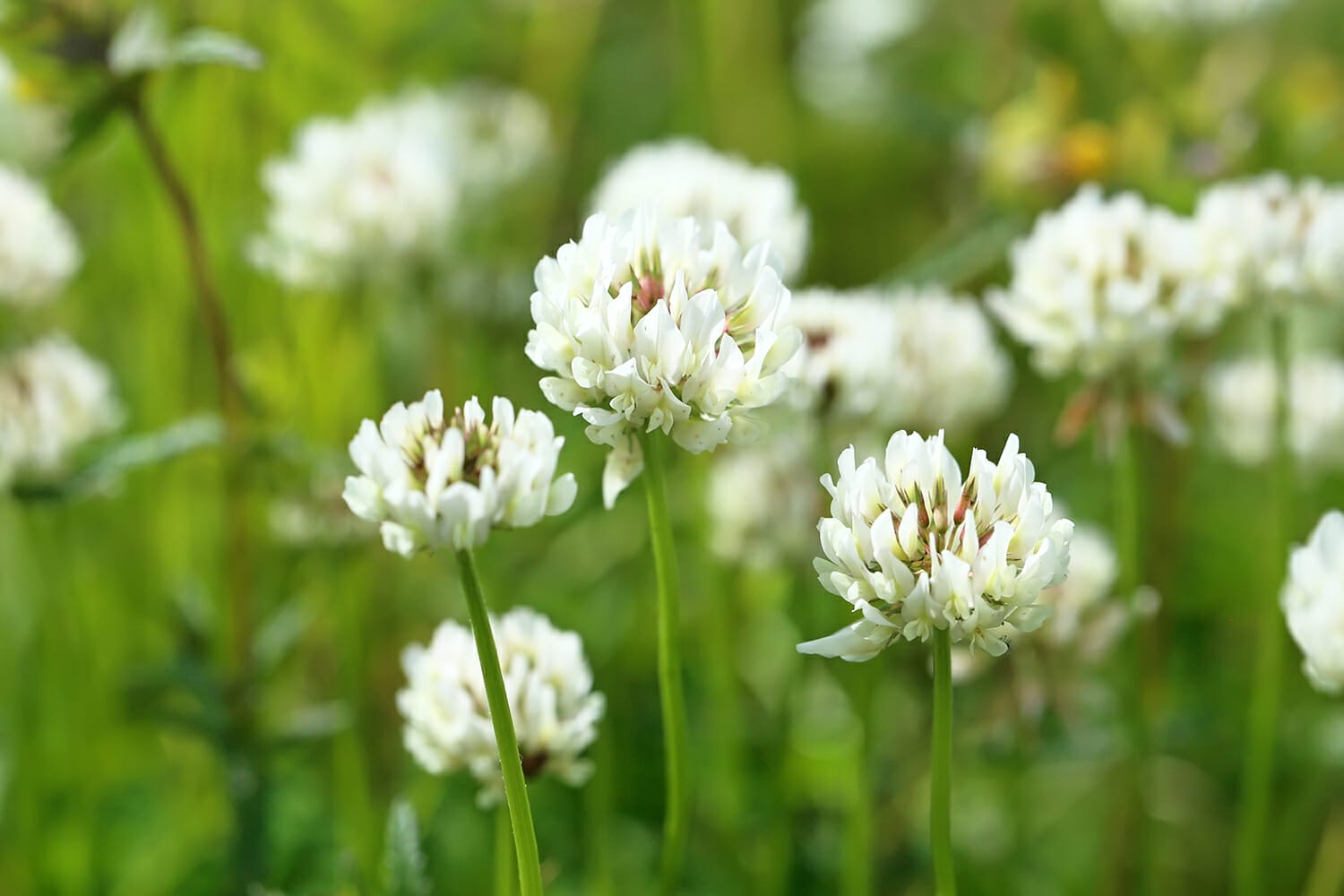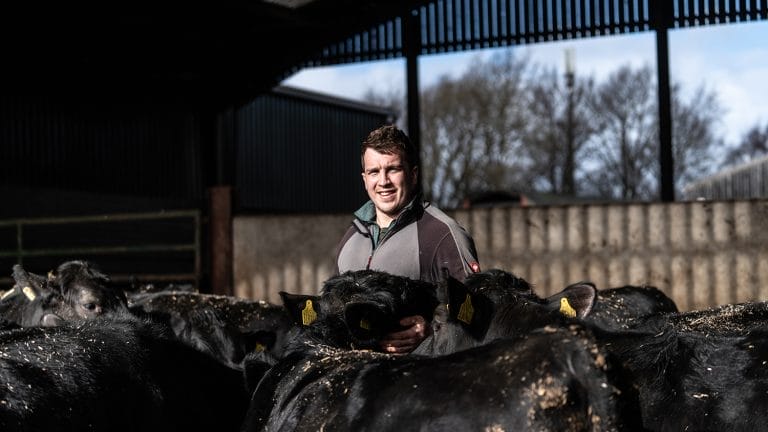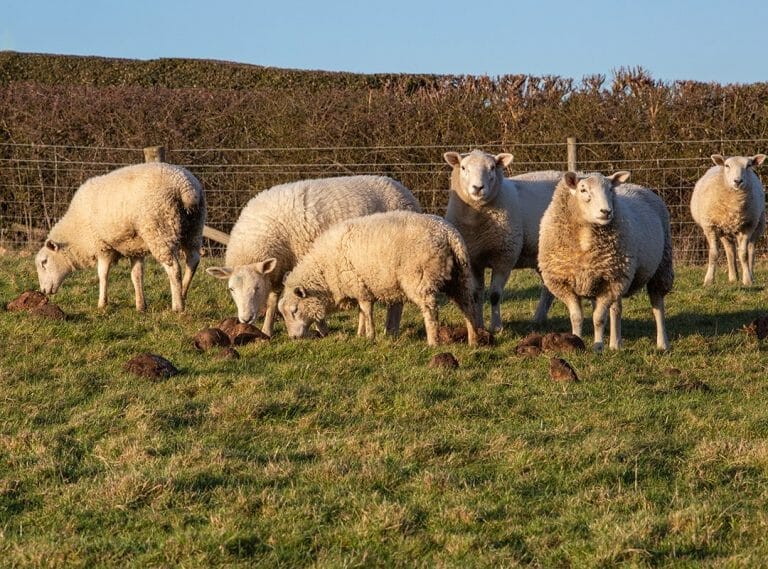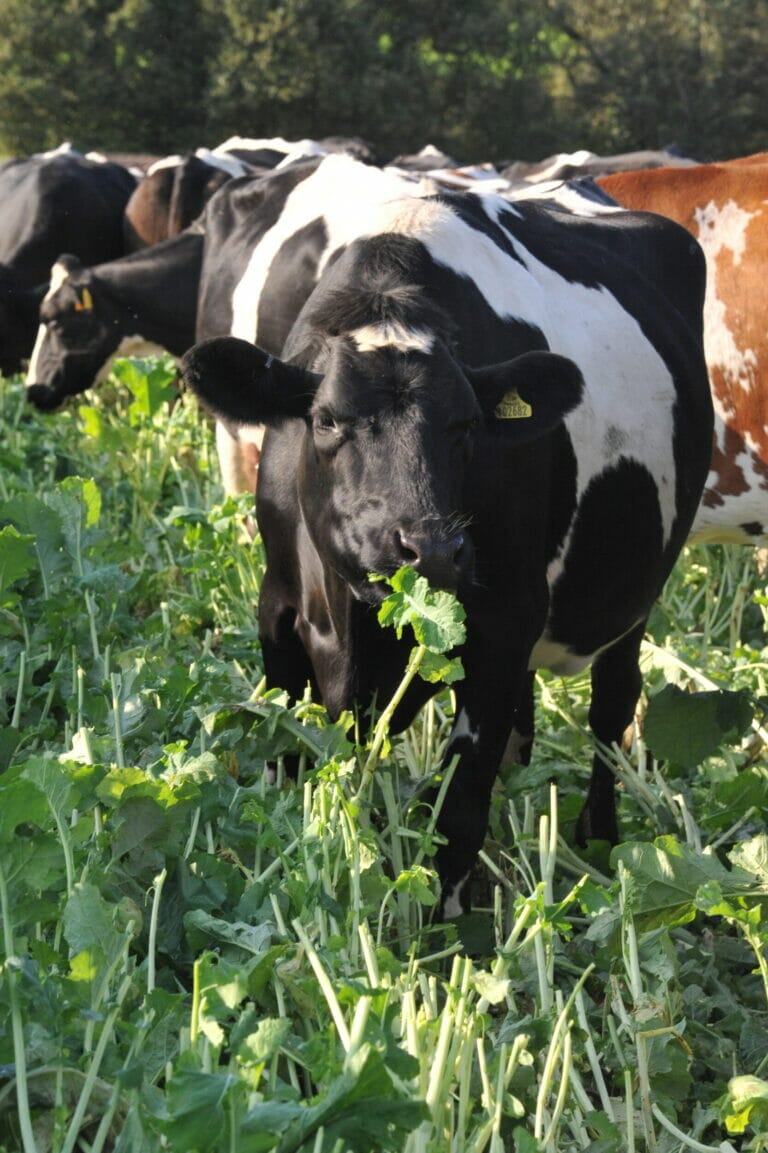Too many grazing mixtures are lacking white clover, either because it was never in the mixture, or because it has been killed out when using herbicides to control other broad-leaved weeds.
A bundle of benefits
But producers are missing a trick. This forage species brings a bundle of benefits.
Alongside increased yields, white clover improves forage quality and, on the back of this, milk yields and solids.
Irish research has shown that incorporating clover increased milk yield by 13.3% and milk solids by 13.4%. Also, dry matter production was 16.8% greater on grass-clover swards, compared with grass-only swards.
And with sustainability being an increasingly important factor, this legume fixes nitrogen from the atmosphere and reduces the crop’s reliance on inorganic fertilisers.
A sward with a ground cover of between 20% and 30% clover species can fix 180kg of nitrogen per hectare, equivalent to 522kg of ammonium nitrate fertiliser. At today’s fertiliser prices that’s worth around £120 per hectare.
White clover’s growth pattern is complementary to grass and a grass-clover mix provides a more consistent crop through the summer, compared with only grass species. The varying root depths means that a grass/white clover ley will be more drought-resilient than one with grass only species.
Adding white clover
White clover is best sown in warm, wet conditions and ideally not when grass is growing rapidly. So late summer and after a silage cut or grazing is ideal.
Natural clover seed is very small and light, so a pelleted seed, such as CloverPlus, will promote successful establishment through better soil to seed contact or a more even coverage if broadcasting.
 A pellet increases the weight and size of the seed, making equipment calibration easier and giving a more consistent spread pattern if broadcast. The additional pellet weight ensures that more seed gets through the sward to give maximum soil-to-seed contact.
A pellet increases the weight and size of the seed, making equipment calibration easier and giving a more consistent spread pattern if broadcast. The additional pellet weight ensures that more seed gets through the sward to give maximum soil-to-seed contact.
Importantly, CloverPlus is treated with the biological seed treatment Headstart Gold. This is proven to speed up germination and improve establishment.
As we approach late summer, this is a timely opportunity to add white clover to grass swards and reap the benefits on your dairy unit.
For more information, download our CLOVERPLUS pelleted white clover blend fact sheet here.



































